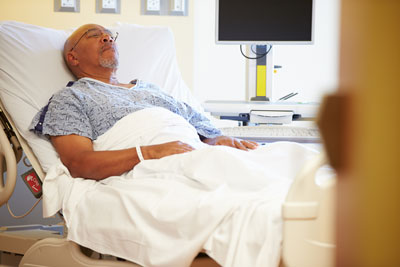Key points
- Melioidosis is caused by Burkholderia pseudomallei bacteria.
- Melioidosis has a wide range of signs and symptoms and can be mistaken for other diseases.
- Clinicians should consider melioidosis if a patient reports recent travel to an endemic area or contact with contact with freshwater (including floodwater) or soil in the U.S. Gulf Coast.
- Healthy people can get melioidosis, but people with certain immunocompromising conditions are at higher risk for the disease.

Overview
Melioidosis is an emerging disease in the Western Hemisphere, including the United States, and some countries within the Caribbean, Central America, and South America. Melioidosis is widespread in Southeast Asia and Northern Australia. There is a wide range of clinical presentations and healthcare workers who suspect melioidosis in a patient should begin treatment as soon as possible and confirm a diagnosis with lab testing.
Melioidosis cases may increase after hurricanes, heavy rain, and other severe weather events. Clinicians should consider melioidosis if a patient reports recent travel to an endemic area or the Gulf Coast region of the southern United States, especially if they report activities involving:
- Handling soil, like gardening, agriculture, or construction
- Contact with fresh water, such as wading or swimming in floodwaters, lakes, ponds, or rivers
- Response or recovery efforts after a hurricane or flooding event
OR
- If they have risk factors, including diabetes, liver disease, renal disease, thalassemia, heavy alcohol use, cancer, immune-suppressing conditions not related to HIV, or chronic lung disease (such as cystic fibrosis, chronic obstructive pulmonary disease (COPD), and bronchiectasis)
Types of melioidosis infection
Generally, symptoms appear 1 to 4 weeks after exposure to B. pseudomallei bacteria.
Melioidosis can be localized or disseminated, and sub-clinical infections are also possible.
A localized infection often presents as an ulcer, nodule, or skin abscess. Symptoms generally include fever and myalgias. Melioidosis most commonly presents as a pulmonary infection, which may include:
- Mild bronchitis to severe pneumonia
- Cough (nonproductive or productive)
- High fever, chest pain, headache, anorexia, and myalgias
- Lesions on chest X-ray that might appear similar to those seen in pulmonary tuberculosis
Patients generally present with acute illness, but around 10 percent present with chronic melioidosis, an ongoing illness of at least two months. Both acute and chronic melioidosis can lead to disseminated infection and rapid-onset septicemia can occur. These conditions are more common in patients with underlying risk factors including diabetes and renal insufficiency. Abscesses may be found throughout the body, notably in the liver, spleen, or prostate. Involvement of joints, bones, viscera, lymph nodes, skin, or brain are also possible.
Symptoms include:
- Fever
- Headache
- Respiratory distress
- Abdominal or chest discomfort
- Myalgias
- Disorientation
- Seizure
For urgent or technical clinical questions, contact bspb@cdc.gov or call the CDC 24/7 Emergency Operations Center at 770-488-7100.
Testing and reporting
Melioidosis is diagnosed by isolating B. pseudomallei from blood, urine, sputum, skin lesions, cerebrospinal fluid, oropharyngeal swab, rectal swab, or abscesses, or by detecting an antibody response to the bacteria.
If B. pseudomallei is identified or suspected, contact your local public health department immediately. The health department can facilitate forwarding the isolate for confirmation to the closest reference laboratory and initiate a public health investigation.
Burkholderia pseudomallei is a Tier 1 select agent. Tier 1 select agents require additional security measures to safeguard them from theft, loss, or release.
Label samples to avoid lab exposure
Patient management
Long-term outcomes and survival depend on disease severity and course of treatment.
Treatment consists of an initial intensive phase, followed by an eradication phase:
Initial intensive therapy lasts 2 weeks to more than 8 weeks:
- Intravenous antibiotics
- Ceftazidime, every 6–8 hours (or 24-hour infusers) OR
- Meropenem, every 8 hours for critically ill patients or patients with CNS or long-bone involvement
- Add PO Trimethoprim-sulfamethoxazole (TMP-SMX) every 12 hours in patients with non-pulmonary focal sites of infection
Eradication therapy lasts 3 months to more than 6 months:
- First choice: Trimethoprim-sulfamethoxazole (TMP-SMX), every 12 hours with folic acid to prevent or reduce antifolate toxicity OR
- Amoxicillin/clavulanic acid (co-amoxiclav), every 8 hours OR
- Doxycycline, once daily OR every 12 hours
If antibiotics are not taken for the length of time prescribed, early recrudescence or subsequent relapse can occur, usually within 1 to 2 years.
Post-exposure prophylaxis
Laboratory personnel who handle specimens from patients suspected of having melioidosis or cultures of B. pseudomallei are at risk of laboratory-acquired melioidosis. If they have a high-risk exposure in a lab, or if they have risk factors for melioidosis and a low-risk exposure, they should begin post-exposure prophylaxis (PEP) immediately.
In the event of a public health emergency involving B. pseudomallei infection, PEP should be given to anyone potentially exposed.
Administer PEP should for 21 days. Oral trimethoprim/sulfamethoxazole (TMP-SMX) is the agent of first choice if tolerated. If the organism is resistant to TMP-SMX or the patient has an allergy to it, the second-line choices are amoxicillin/clavulanic acid or doxycycline.
For urgent or technical clinical questions, contact bspb@cdc.gov or call the CDC 24/7 Emergency Operations Center at 770-488-7100.
